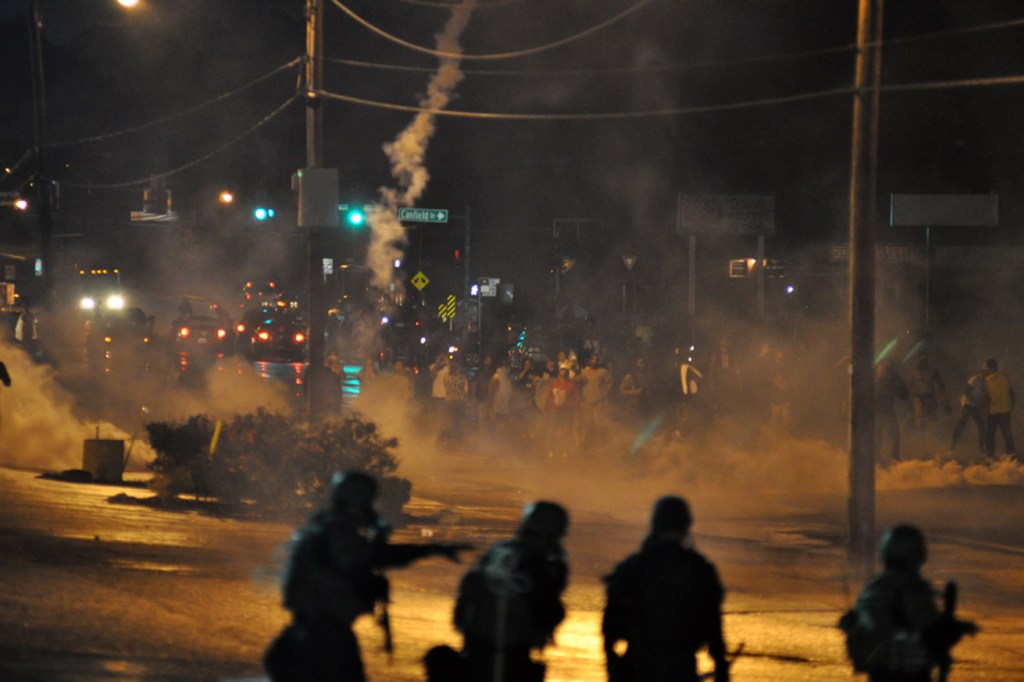3Qs: Race, justice, and Ferguson

Jack McDevitt directs the Institute on Race and Justice at Northeastern University and is the associate dean of research and graduate studies for the College of Social Sciences and Humanities. The institute performs research and scholarship examining the influence of race on important questions of social justice. Here, McDevitt turns his attention to the events unfolding in Ferguson, Missouri—where community tensions have escalated following the deadly shooting of a black teenager by a white police officer—and how the institute’s work can shed light on these and related issues.
You have observed police during mass disturbances as part of your research and career. What comes to mind from those experiences, and how to do they relate to the situation in Ferguson?
I think there was a really interesting juxtaposition in 2004 between the Republican National Convention in New York City and the Democratic National Convention held in Boston. In New York, there were a series of protests, as there often are during these political events. But the NYPD made 1,800 arrests and was sued by ACLU, later agreeing to an $18 million settlement. They used a militaristic approach like we’re seeing now in Ferguson, Missouri, where SWAT teams and riot squads have been deployed. In Boston, police took a different approach. The military presence was not prominent, but rather held off-site and was there only if necessary. Police tried to establish a relationship with protesters. The result: There were six arrests, and protesters largely reported the Boston police treated them with respect. Analyzing situations such as these is among the research we perform at Northeastern’s Institute on Race and Justice.
In Ferguson, one of the short-term steps that should be taken is to remove all military trucks from public view. The National Guard should be moved back as well; they shouldn’t be on the front lines. Other immediate steps include police providing more transparency in their investigation and identifying and embracing those in the community who want to move forward to repair their community. To prevent this situation from happening again, the relationships between police and community leadership must be improved. It will take a while to build up that trust.
You noted the importance of police embracing the good people in Ferguson who are trying to strengthen their community. There are also those looking to take advantage of the situation. How has this dynamic played out in Ferguson, and how should law enforcement respond?
There are many people who have done remarkable things to secure their community. People have stood between storefronts and criminals looking to loot them. Teachers have been bringing food to people who need to eat. These people and many others want to grow and strengthen community, and they are easily identifiable. Part of the short-term solution here is for the police to identify and connect with these good people, which will improve the flow of communication between the community and law enforcement and begin the process of healing.
In situations like this, the criminal element is often small. For instance, during the Occupy movement in Boston, there were idealistic people who were concerned about inequality and were the first to camp out at the site. Over time, criminal elements such as gangs and drug dealers came in and took advantage of the situation by victimizing and robbing others. But I think the police did a nice job of identifying the difference between the two groups.
You mentioned how your observation of the police response during the 2004 RNC and DNC is part of the Institute on Race and Justice’s research efforts. What other work is performed at the institute, and how does it relate to Ferguson?
Since 2000, we’ve done a lot of work with community groups around racial profiling by police. When we’re talking about people who’ve been mistreated, one thing we do to start the conversation is bring in both sides. When I ask people of color in the room who has been profiled, nearly every hand goes up. But when I ask police if they’ve pulled someone over due to their race, no one raises their hand. The next question, naturally, is how can these two realities exist? When addressing an issue like racial profiling, it’s important to start with data. Once you have the data, you can have the conversation about why there are these differences in opinion.
Studies have shown that, oftentimes, bias is unconscious; people don’t realize it is affecting their actions. So one of the positive things about the research that we do is that if you have this data, you can help people realize and over time change their behavior. This is an example of how academic institutions can play in a role in situations like Ferguson. We can collect information, participate in conversations, and help people see others’ viewpoints.






